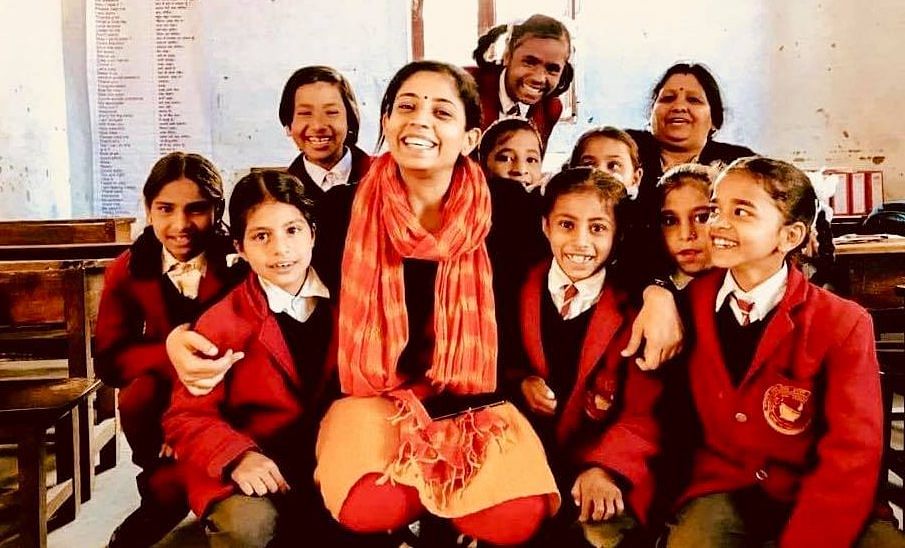Spurred on by an aspirant’s suicide earlier this year, the officers have started a Facebook page to share stories of civil servants’ struggles to make it.
New Delhi: Back in June, a 28-year-old UPSC aspirant committed suicide for not being allowed entry into the examination hall. It was another chilling reminder of the kind of pressure aspirants face — nearly five lakh appear for the examination every year, and less than a thousand end up getting selected.
The incident spurred three young IAS officers into action — something had to be done to bring down the examination from its rarefied, haloed stature, and normalise it for those who aspire to be part of India’s coveted civil services.
Also read: How an IAS officer in Kerala used Facebook to help flood victims
Their idea? Humanise the faceless bureaucracy. Share the struggle behind the glamour. Start a Facebook page and reach out to as many aspirants as possible, to avert any more suicides due to the pressure of the exam.
Thus was born a page called ‘Humans of LBSNAA’ — standing for the Lal Bahadur Shastri National Academy of Administration, the finishing school for India’s civil servants.
“We were hearing of so many chilling cases of suicide by candidates who don’t make it to the services, and we thought this has to be because there is no awareness about the actual struggles,” said Jitin Yadav, a 2016 batch West Bengal cadre IAS officer, who runs the page with his batchmates Torul Raveesh and Devansh Yadav.
“In India, bureaucracy has such a high status. When someone becomes a bureaucrat, they have a certain kind of aura around them. But people don’t know what goes into that. We thought we should reach out to people using social media, especially aspirants, and tell them successful stories of people who have struggled for years to crack the exam.
“Before we started this page, we didn’t even know our own batch mates’ stories… So we thought there is a need to humanise bureaucrats, tell people we’re one of them — that’s why the name ‘Humans of LBSNAA’.”
Compelling stories
The most recent story posted on the page is that of 2017 batch IAS officer Kempahonnaiah, who lost his eyesight at the age of nine.
Kempahonnaiah says growing up, he played the role of “an involuntary clown who couldn’t understand the coordinates of normal clothing — wearing it inside out and upside down”.
Through his story, he talks to the aspirants who may be bogged down by the pressures of the examination about the added disadvantage of blindness, and how he overcame it to finally become a bureaucrat.
“My wife dedicated close to 10 hours a day just for my preparation, she would read out to me; make audio notes,” the post says.
“I tell this story not to jolt you — I tell it because I want to tell each one of you to never stop aspiring and never give up.”
There are 29 other stories posted on the page so far, and Yadav says there’s a number of ways they’ve been sourcing these stories.
“We mostly reach out to people and interview them for 5-10 minutes, storify their interviews, send them back for approval and then post them,” he says. “Sometimes people send us their stories themselves on WhatsApp, email, etc.”
Two months since it came up, the page has over 21,000 followers. A Twitter handle @humansoflbsnaa has also been started.
The people currently running the page say they plan to pass on its admin rights to subsequent batches of civil servants.
Undocumented aspect of Indian bureaucracy
While most of the contributors to the group so far have been younger bureaucrats, the trio seeks to diversify its base of storytellers in the future.
“Recently, we were approached by a woman in Singapore whose father became India’s first engineer-IAS officer in 1962. It would be a fascinating story,” says Jitin.
The administrators are also in touch with senior and retired bureaucrats, who seem to be closely following the page and appreciating the effort.
“This page brings forth a very human aspect of those who clear services — their horrid and difficult past. It brings an absolutely new dimension to the bureaucracy,” says Anil Swarup, who recently retired as secretary in the human resource development ministry. “This side of Indian bureaucracy has never been documented before.”
Also read: Unhappy with ‘generalist’ tag, IAS body wants appointment based on qualification
Moreover, by telling stories of economically-disadvantaged candidates who cleared the exam, the page dispels the notion that one needs to be well-off to become a bureaucrat, says Swarup.
“There is a sea change in the constitution of the Indian bureaucracy now. It’s like Indian cricket, which first started with the elites from Delhi and Bombay, but is now truly pan-Indian. The page also emphasises this diversity,” he added.
